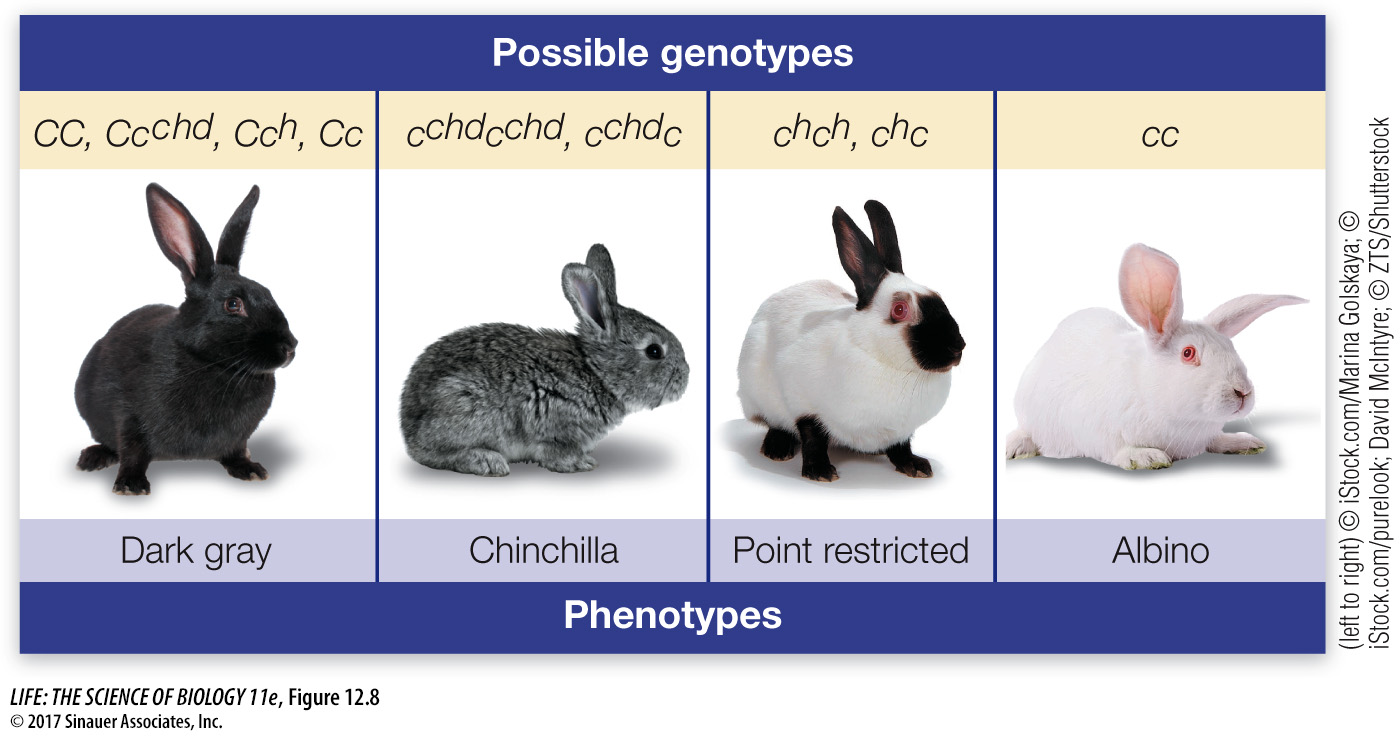Many genes have multiple alleles
Because of random mutations, more than two alleles of a given gene may exist in a group of individuals. Any one individual has only two alleles—
C determines dark gray.
cchd determines chinchilla, a lighter gray.
ch determines Himalayan, where pigment is restricted to the extremities (point restricted).
c determines albino.
The hierarchy of dominance for these alleles is C > Cchd, Ch > c. Any rabbit with the C allele (paired with itself or any other allele) is dark gray, and a cc rabbit is albino. Intermediate colors result from different allele combinations, as shown in Figure 12.8. As this example illustrates, multiple alleles can increase the number of possible phenotypes. At the biochemical level, these alleles determine various amounts of a pigment because of an enzyme with various levels of activity.

A dramatic and serious example of multiple alleles involves the gene product targeted by certain widely used drugs designed to undermine the effects of the parasite that causes malaria in humans. There are numerous alleles of this parasite gene, some of which make the gene product insensitive to the drugs (they cannot bind to the target protein). Since the parasite is haploid, when a parasite has one of these resistance alleles and is in a human who is being treated with the drugs, that parasite will survive and reproduce while the vast majority of parasites with drug-